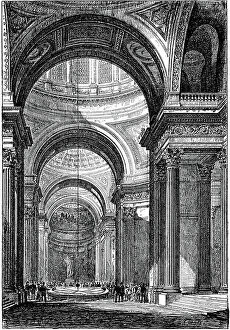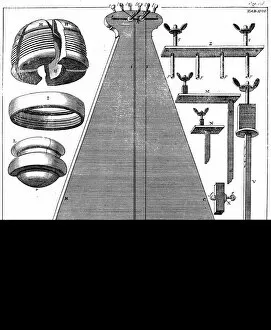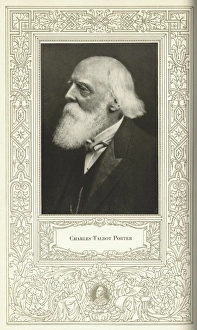Inertia Collection
"Inertia: A Journey Through Time and Space" Step into the world of inertia, where time stands still and motion takes center stage
All Professionally Made to Order for Quick Shipping
"Inertia: A Journey Through Time and Space" Step into the world of inertia, where time stands still and motion takes center stage. From the mesmerizing woodblock art of "La Paresse, 1896" to the groundbreaking discoveries of Charles Talbot Porter, this captivating caption unveils the essence of inertia. Travel back in time to witness the birth of scientific exploration with the "Percussion pendulum, 1725. " Its rhythmic swings revealed a hidden force that would forever change our understanding of motion. Fast forward to c1851 when "General properties of bodies" shed light on the fundamental principles governing inertia. In Paris' iconic Pantheon, Foucault's pendulum danced gracefully in 1851 (1887), showcasing both Earth's rotation and the concept of inertia. This ingenious invention sparked a revolution in scientific thought. Another iteration emerged around c1895 as Foucault's pendulum continued its enchanting display. The United States Air Force took flight with their North American F-100A-5-NA 52-5775 aircraft, defying gravity while embodying Newton's first law - an object at rest tends to stay at rest unless acted upon by an external force. The power behind this mighty machine lies within inertia itself. Educational plates published in Wurtemberg circa 1850 further unraveled nature's secrets through visual representation. These plates brought clarity to complex concepts surrounding general properties and physical laws governing bodies. Delve deeper into experimentation as two suspended objects swing side by side in a Percussion Pendulum experiment investigating inertia firsthand. Witness how these objects resist any changes imposed upon them due to their inherent property - inertia. Timekeeping reached new heights with a remarkable pendulum clock built in 1883; its precise movements governed by none other than Newtonian physics and inertial forces acting upon it relentlessly. An intriguing experiment unfolds before your eyes as a red cloth is pulled from under a plate with a sandwich.
















